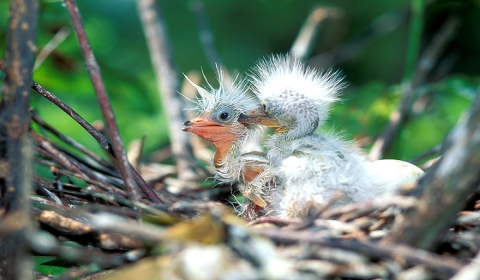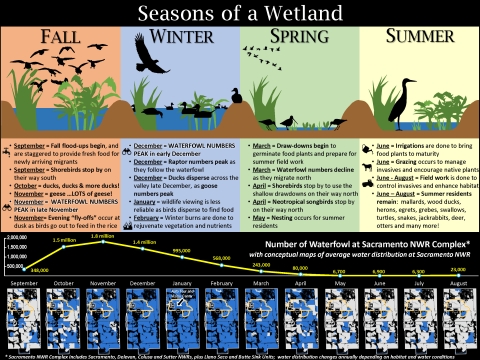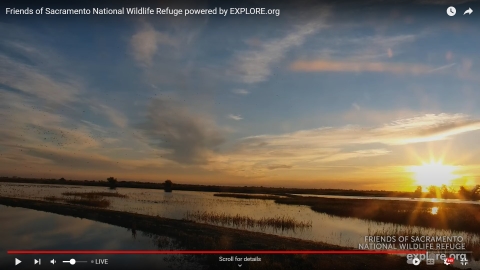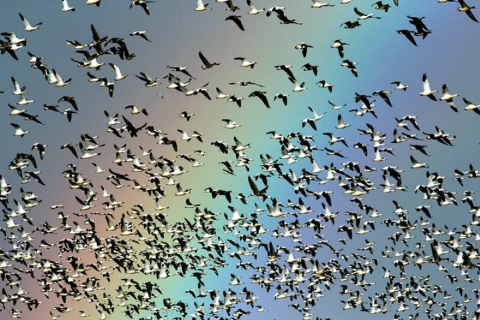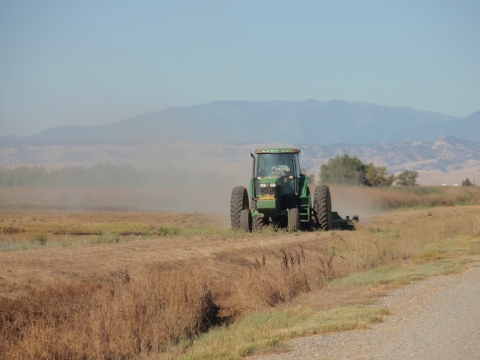Updated April 16, 2025 - 3pm
- County Road 68 (public road) from Highway 99 to 3 miles east of Highway 99 is expected to stay closed to through-traffic as crews replace a collapsed culvert. Access to Logan Creek Spring Trails (Sacramento NWR) is not available at during this time. This road work is likely to continue through Friday, April 18.
Visit Us
Welcome to Sacramento National Wildlife Refuge!
Sacramento NWR is the Headquarters for the Sacramento NWR Complex, and offers a Visitor Center with Restrooms and a Picnic Area, Auto Tour, Information Kiosks, Observation Decks, Trails, Photography Blinds (by reservation only), limited Bicycling, Environmental Education Programs and Hunting.
There are LOTS of recreational opportunities on the other refuges of the Complex, including Visitor Areas, Auto Tours, trails, bicycling, photography, and hunting.
Our Visit Us page has all the information you need to plan your visit, including recreational opportunities, what to expect, hours and directions, accessibility, passes and permits, rules and policies, local and contact information. Or jump straight to your favorite activity using these quick links:
VISITOR CENTERAUTO TOURSTRAILSBICYCLINGPHOTOGRAPHYHUNTING-WATERFOWLHunting-RiverMAPS, DIRECTIONS + BROCHURESENVIRONMENTAL EDUCATION
Sacramento National Wildlife is one of the 5 National Wildlife Refuges (NWR) and 3 Wildlife Management Areas (WMA) that make up the Sacramento National Wildlife Refuge Complex:
Location and Contact Information
- Sacramento National Wildlife Refuge
About Us
The Sacramento National Wildlife Refuge is located about 70 miles north of the metropolitan area of Sacramento and 7 miles south of the town of Willows in Glenn and Colusa Counties. The refuge consists of 10,819 acres of wetlands, grasslands and riparian riparian
Definition of riparian habitat or riparian areas.
Learn more about riparian habitats.
Click on the link below to learn more about us!
What We Do
- Resource Management
To help plants and wildlife, Refuge staff uses a variety of habitat management techniques to maintain, recover or enhance plant and wildlife values. Refuge staff carefully consider any management techniques and employ them in varying degrees according to the situation.
- Conservation and Partnerships
The Complex is involved in many conservation endeavors, including Comprehensive Conservation Plans, Private Landowner Programs, and the National Wildlife Refuge System Improvement Act.
Our Organization
National Wildlife Refuge System Improvement Act of 1997:The NWRS Improvement Act defines a unifying mission for all refuges, including a process for determining compatible uses on refuges, and requiring that each refuge be managed according to a CCP. The NWRS Improvement Act expressly states that wildlife conservation is the priority of System lands and that the Secretary shall ensure that the biological integrity, diversity, and environmental health of refuge lands are maintained. Each refuge must be managed to fulfill the specific purposes for which the refuge was established and the System mission. The first priority of each refuge is to conserve, manage, and if needed, restore fish and wildlife populations and habitats according to its purpose.
Our Species
Sacramento National Wildlife Refuge is best known for migratory waterfowl. Waterfowl are present September through April and numbers regularly peak at over 500,000 ducks and 250,000 geese. Sacramento NWR is an important wintering grounds for Tule Greater White-fronted Geese. The Sacramento National Wildlife Refuge Complex provides nearly 70,000 acres of wetland, grassland, and riparian riparian
Definition of riparian habitat or riparian areas.
Learn more about riparian habitats for a wide array of waterfowl, shorebirds, raptors, waterbirds, songbirds, reptiles, and mammals. The Complex currently supports nearly 300 species of birds.

